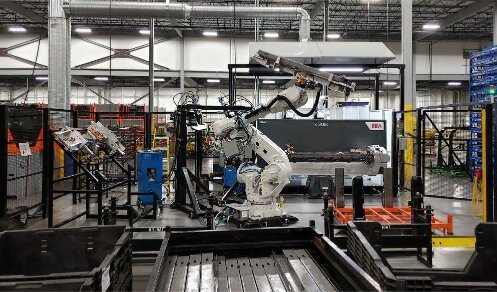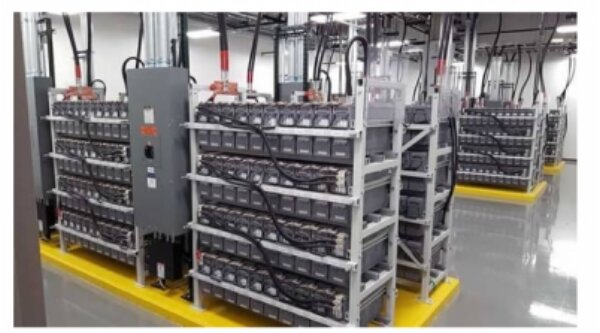Een veelvoorkomende uitdaging bij de productie van elektronica is het maken van nauwkeurige en herhaalbare soldeerverbindingen zonder warmtegevoelige onderdelen te beschadigen. Traditionele soldeermethoden zijn vaak niet nauwkeurig, veroorzaken oververhitting en leiden tot inconsistente resultaten. Lasersolderen biedt een betrouwbare oplossing voor deze problemen.
Ben je nieuwsgierig naar hoe het werkt en waar het in jouw project past? Laten we de principes, toepassingen en voordelen van lasersolderen verkennen.

Wat is lasersolderen?
Lasersolderen gebruikt een gefocuste laserstraal om soldeer te smelten en materialen samen te voegen. De laser verhit het soldeer zonder de onderdelen aan te raken, waardoor een schone en sterke verbinding ontstaat. Deze methode is ideaal voor delicate of complexe onderdelen waarbij precisie belangrijk is.
In tegenstelling tot traditioneel solderen vereist lasersolderen geen fysiek contact, waardoor het risico op beschadiging van gevoelige onderdelen kleiner wordt. Het is een niet-invasieve techniek die consistente resultaten oplevert.
Belangrijkste verschillen tussen lasersolderen en traditionele soldeertechnieken
Lasersolderen en traditionele methoden hebben duidelijke verschillen. Hier is een snelle vergelijking:
- Contact vs. contactloos: Bij traditioneel solderen worden gereedschappen gebruikt die de materialen aanraken. Lasersolderen maakt gebruik van een straal, waardoor fysiek contact wordt vermeden.
- Warmteregeling: Lasers zorgen voor precieze warmte, waardoor het risico op schade wordt verkleind. Traditionele methoden kunnen nabijgelegen gebieden oververhitten.
- Snelheid: Lasersolderen is sneller, vooral voor complexe taken.
- Toepassingen: Lasersolderen blinkt uit in delicaat of ingewikkeld werk. Traditionele methoden zijn beter voor eenvoudigere klussen op grotere schaal.
Grondbeginselen van lasersolderen
Lasersolderen is een precieze en efficiënte manier om materialen te verbinden. Maar hoe werkt het en wat maakt het zo effectief? Laten we het eens uit de doeken doen.
Hoe lasersolderen werkt: De basisprincipes
Lasersolderen maakt verbindingen met behulp van gerichte lichtenergie om soldeermateriaal te verhitten tot het smeltpunt. Het proces begint wanneer de laserstraal het doelgebied raakt. Het materiaal absorbeert de lichtenergie en zet deze om in warmte. Door deze warmte smelt het soldeer, dat in het verbindingsgebied vloeit. Als het soldeer afkoelt, vormt het een solide elektrische en mechanische verbinding.
Soorten laserbronnen die worden gebruikt bij solderen
Er worden verschillende lasers gebruikt om te solderen, afhankelijk van de toepassing. Hier zijn de meest gebruikte types:
Vezellasers
Fiber lasers zijn compact en efficiënt. Ze werken goed voor kleine, precieze taken, zoals het solderen van elektronische componenten, en hun hoge energiedichtheid maakt ze ideaal voor fijn werk.
Diodelasers
Diodelasers zijn veelzijdig en kosteneffectief. Ze worden vaak gebruikt in industriële toepassingen. Diodelasers leveren consistente prestaties en zijn gemakkelijk te integreren in geautomatiseerde systemen.
CO₂ Lasers
CO₂ lasers zijn robuust en werken goed met niet-metalen materialen. Ze worden minder gebruikt bij het solderen, maar zijn nuttig voor gespecialiseerde taken.
Materialen die geschikt zijn voor lasersolderen
Lasersolderen werkt met verschillende materialen. Hier volgt een overzicht van de meest voorkomende:
Veel gebruikte metalen bij lasersolderen
- Koper: Op grote schaal gebruikt in elektronica voor zijn geleidbaarheid.
- Goud: Ideaal voor hoogwaardige toepassingen dankzij de corrosiebestendigheid.
- Zilver: Biedt uitstekende thermische en elektrische eigenschappen.
Deze metalen zijn gemakkelijk te solderen en zorgen voor sterke, betrouwbare verbindingen.
Niet-metalen materialen en hun uitdagingen
- Keramiek: Gebruikt in elektronica en medische apparatuur. Ze moeten voorzichtig worden behandeld om scheuren te voorkomen.
- Kunststoffen: Sommige types kunnen worden gesoldeerd, maar hebben vaak een lagere hittetolerantie.
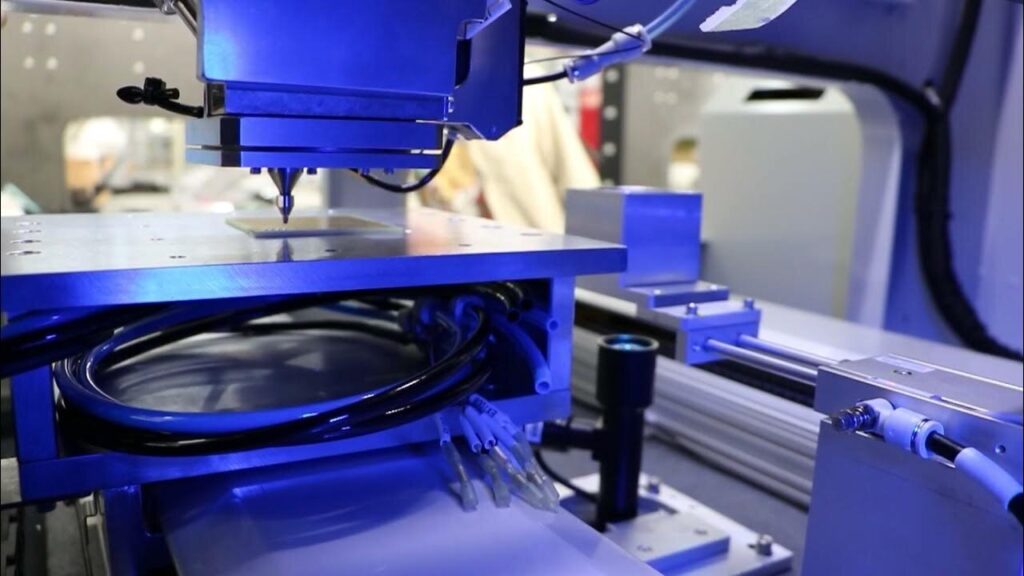
Stap voor stap lasersoldeerproces
Lasersolderen is een nauwkeurig proces dat een zorgvuldige voorbereiding en uitvoering vereist. Hier volgt een stap-voor-stap uitleg over hoe het werkt.
Stap 1: De materialen voorbereiden
Voordat je begint, moet je ervoor zorgen dat de materialen schoon en klaar zijn. Verwijder vuil, vet of oxidatie van de oppervlakken.
Stap 2: De laserparameters instellen
Configureer vervolgens de laserinstellingen. Dit omvat het vermogen, de grootte van de straal en de duur.
Stap 3: Flux aanbrengen (indien nodig)
Flux zorgt ervoor dat het soldeer beter vloeit en beter hecht. Breng het indien nodig aan op het gebied van de verbinding.
Stap 4: Laserverwarming en soldeersmelten
Nu verhit de laser het soldeer. De straal richt zich op het soldeer en smelt het om de verbinding te vormen.
Stap 5: Afkoelen en stollen
Laat het soldeer na het verwarmen afkoelen en stollen. Dit vormt een sterke, duurzame verbinding.
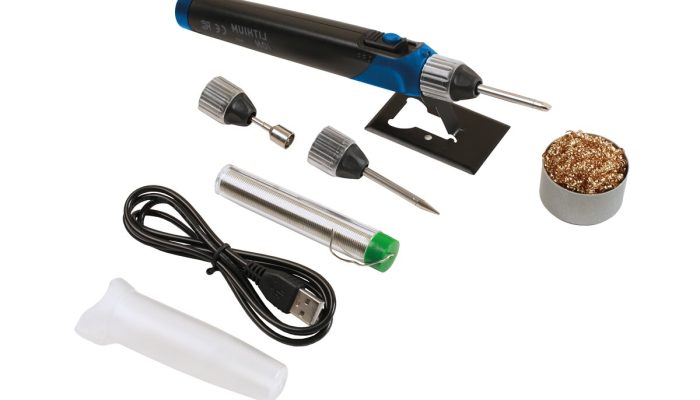
Voordelen van lasersolderen
Lasersolderen onderscheidt zich door zijn precisie, snelheid, kwaliteit en veelzijdigheid. Deze voordelen maken het tot een topkeuze voor vele industrieën. Laten we ze eens op een rijtje zetten.
Precisie
Lasersolderen is uiterst nauwkeurig. De gefocuste straal verwarmt alleen het doelgebied zonder naburige componenten aan te tasten, waardoor het ideaal is voor kwetsbare onderdelen in elektronica, medische apparatuur en andere precisie-industrieën.
Snelheid
Het proces is sneller dan traditionele soldeermethoden. Het past direct warmte toe en voltooit verbindingen in seconden, waardoor de productietijd korter wordt en de efficiëntie toeneemt, vooral bij geautomatiseerde productie.
Kwaliteit
Lasersolderen produceert schone, consistente verbindingen met minimale defecten. De gecontroleerde warmte vermindert oxidatie, kromtrekken en thermische spanning, waardoor de sterkte en betrouwbaarheid van het eindproduct verbetert.
Veelzijdigheid
Lasersolderen werkt met verschillende materialen, waaronder metalen en gecoate oppervlakken. Het past zich aan verschillende vormen en afmetingen aan, waardoor het geschikt is voor vele industrieën, van elektronica tot autoproductie.
Uitdagingen van lasersolderen
Hoewel lasersolderen veel voordelen biedt, is het niet zonder uitdagingen. Inzicht in deze hindernissen kan u helpen beslissen of het de juiste keuze is voor uw behoeften.
Problemen met materiaalcompatibiliteit
Niet alle materialen werken goed met lasersolderen. Sommige metalen, zoals aluminium en koper, reflecteren laserenergie, waardoor ze moeilijker te bewerken zijn. Er kunnen speciale coatings of oppervlaktebehandelingen nodig zijn om de absorptie te verbeteren.
Apparatuurkosten en initiële investering
Lasersoldeersystemen vereisen geavanceerde technologie, waardoor ze duur zijn. De initiële investering omvat de laserbron, controlesystemen en veiligheidsmaatregelen. Hoge aanloopkosten kunnen een barrière vormen voor kleinere fabrikanten.
Complexiteit van processen en de behoefte aan bekwame operators
Het bedienen van een lasersoldeersysteem vereist training en expertise. Factoren zoals laservermogen, bundelfocus en materiaaleigenschappen moeten zorgvuldig geregeld worden. Zonder de juiste instellingen kunnen defecten zoals zwakke verbindingen of oververhitting optreden.
Toepassingen van lasersolderen
Lasersolderen is veelzijdig en wordt in veel industrieën gebruikt. De precisie en betrouwbaarheid maken het ideaal voor hightechtoepassingen. Laten we eens kijken waar het een impact heeft.
Elektronica productie
Elektronicafabrikanten gebruiken lasersolderen om printplaten, microchips en andere kleine onderdelen te assembleren. Het proces beschermt kwetsbare onderdelen door overtollige warmte te beperken. Het zorgt voor herhaalbare resultaten van hoge kwaliteit.
Auto-industrie
Autofabrikanten gebruiken lasersolderen voor kabelbomen, sensoren en accupolen. Het proces maakt sterke verbindingen die bestand zijn tegen trillingen en slijtage, waardoor de duurzaamheid van elektronische onderdelen in voertuigen wordt verbeterd.
Ruimtevaart en defensie
De luchtvaart- en defensie-industrie hebben behoefte aan nauwkeurig en betrouwbaar soldeerwerk. Lasersolderen wordt gebruikt in luchtvaartelektronica, satellieten en communicatiesystemen. Het biedt een hoge nauwkeurigheid en consistentie, die cruciaal zijn voor de veiligheid en prestaties.
Productie medische apparatuur
Fabrikanten van medische hulpmiddelen gebruiken lasersolderen voor pacemakers, gehoorapparaten en chirurgische instrumenten. Het proces maakt kleine, zeer nauwkeurige verbindingen mogelijk. Het vermindert ook hitteschade, waardoor componenten veilig en functioneel blijven.
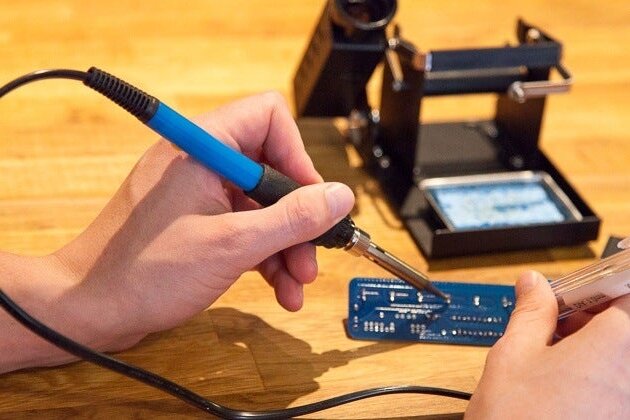
Beste praktijken voor lasersolderen
Volg deze best practices om de beste resultaten te behalen met lasersolderen. Ze zorgen voor verbindingen van hoge kwaliteit en efficiënte processen.
Laserparameters optimaliseren voor verschillende materialen
Verschillende materialen hebben verschillende laserinstellingen nodig. Pas het vermogen, de grootte van de straal en de duur aan het materiaal en soldeertype aan.
- Vermogensniveaus: Hoger vermogen voor dikkere materialen, lager vermogen voor kwetsbare onderdelen.
- Straalfocus: Kleinere bundels voor precisie, grotere bundels voor grotere oppervlakken.
- Opwarmtijd: Langer voor soldeer met een hoog smeltpunt, korter voor soldeer met een laag smeltpunt.
Juiste oppervlaktevoorbereiding voor hoogwaardige verbindingen
Reinig en prepareer de oppervlakken voor het solderen. Dit helpt het soldeer goed te hechten.
- De oppervlakken reinigen: Verwijder vuil, vet en oxidatie.
- Ruw oppervlak: Licht schuren kan de hechting verbeteren.
- Flux toepassen: Gebruik vloeimiddel om het soldeer beter te laten vloeien en hechten.
Strategieën voor procesbewaking en detectie van defecten
Het soldeerproces bewaken om problemen in een vroeg stadium op te sporen. Gebruik hulpmiddelen en technieken om defecten op te sporen.
- Real-time bewaking: Gebruik camera's of sensoren om het proces te bekijken.
- Verbindingen inspecteren: Controleer op scheuren, leegtes of onvolledige verbindingen.
- Aanpassen indien nodig: Wijzig de instellingen als er defecten worden gevonden.
Conclusie
Lasersolderen is een nauwkeurige, snelle en betrouwbare methode om materialen te verbinden. Het maakt gebruik van gefocuste laserstralen om soldeer te smelten, waardoor sterke verbindingen ontstaan zonder de omliggende gebieden te beschadigen. Deze techniek is ideaal voor delicate of complexe onderdelen, waardoor het een topkeuze is voor elektronica, auto's, lucht- en ruimtevaart en medische apparatuur.
Als je op zoek bent naar een oplossing die precisie, snelheid en kwaliteit combineert, dan is lasersolderen misschien wel het antwoord. Neem contact met ons op vandaag nog om te leren hoe lasersolderen uw projecten ten goede kan komen. Laten we uw behoeften bespreken en de beste oplossing voor u vinden!
Hey, ik ben Kevin Lee

De afgelopen 10 jaar heb ik me verdiept in verschillende vormen van plaatbewerking en ik deel hier de coole inzichten die ik heb opgedaan in verschillende werkplaatsen.
Neem contact op

Kevin Lee
Ik heb meer dan tien jaar professionele ervaring in plaatbewerking, gespecialiseerd in lasersnijden, buigen, lassen en oppervlaktebehandelingstechnieken. Als technisch directeur bij Shengen zet ik me in om complexe productie-uitdagingen op te lossen en innovatie en kwaliteit in elk project te stimuleren.


